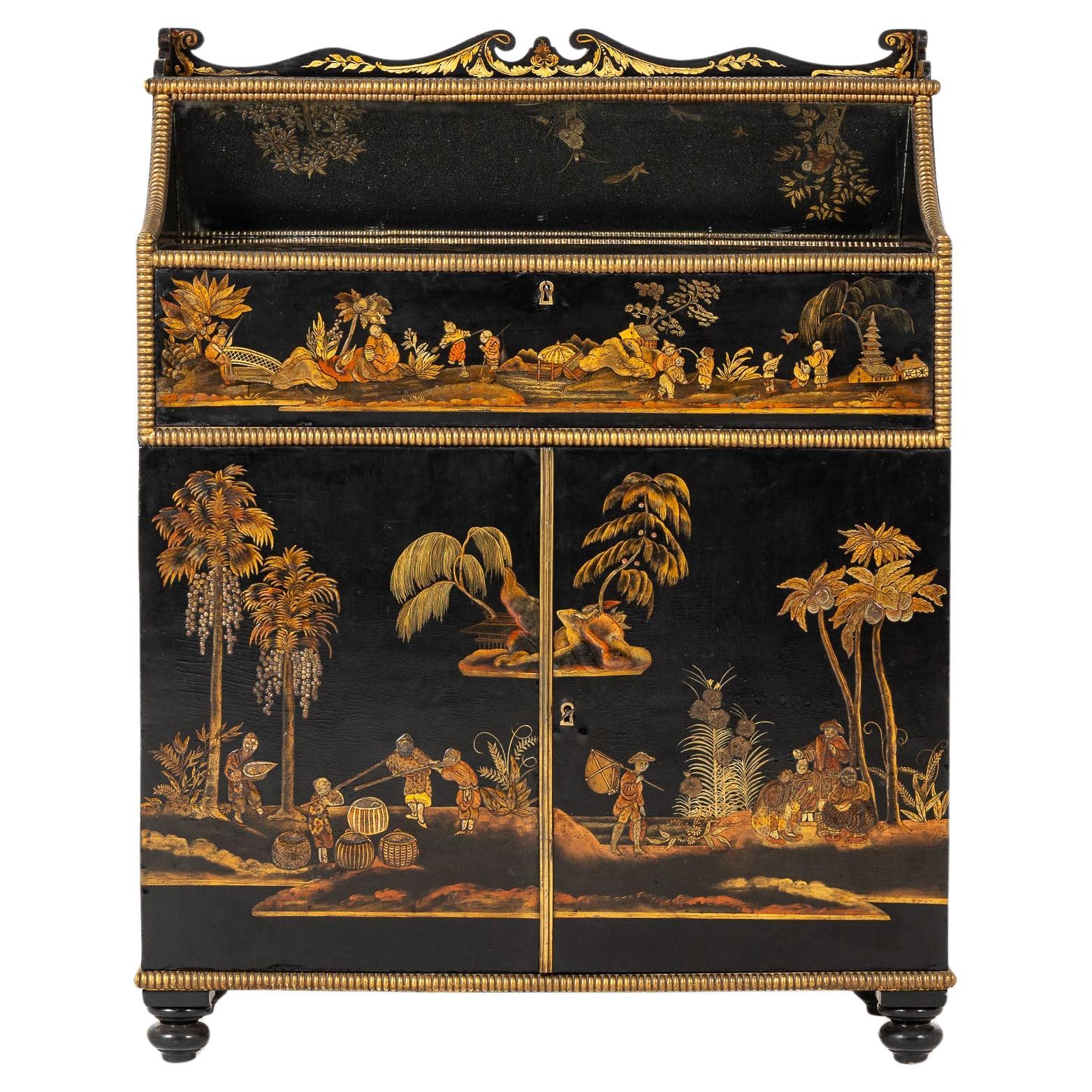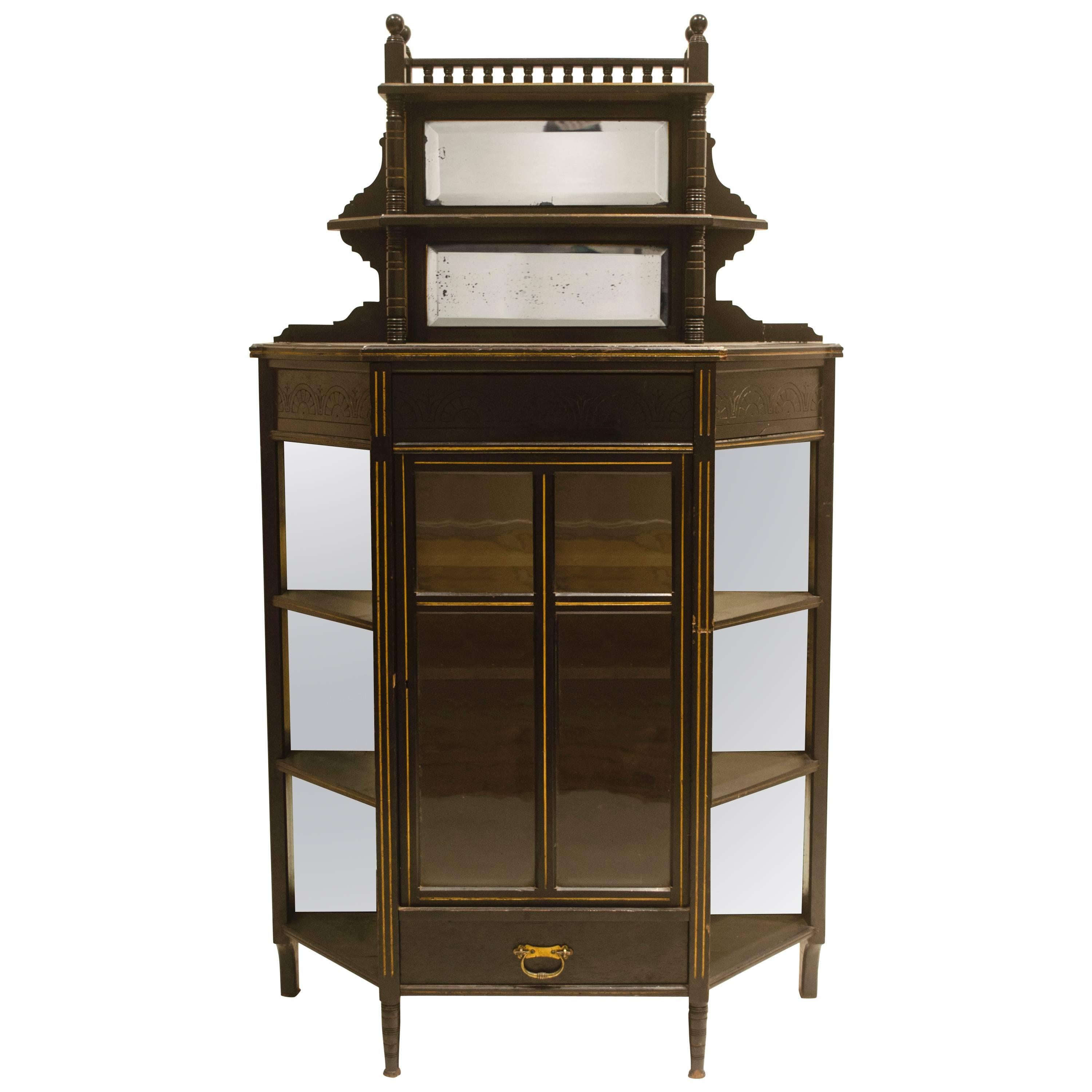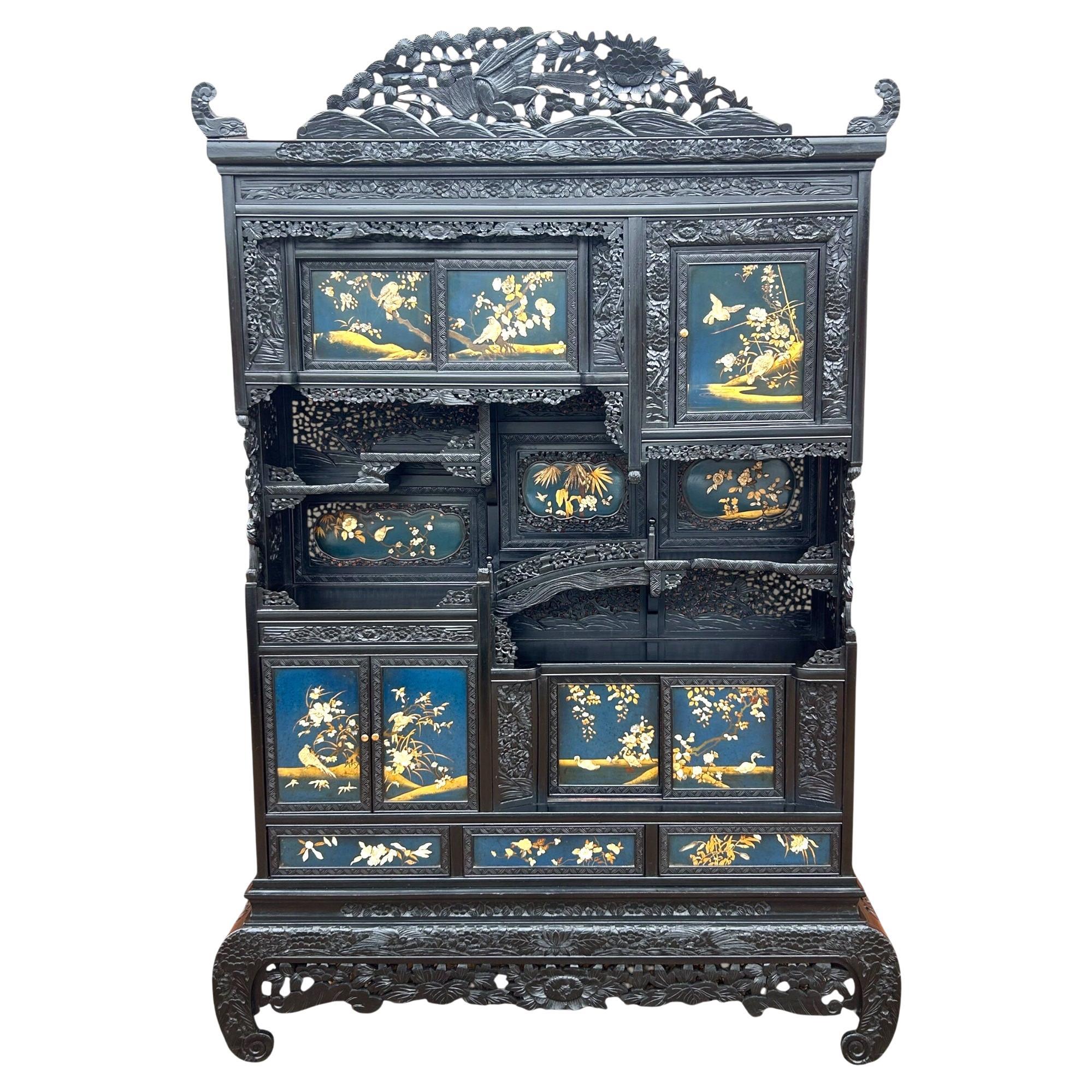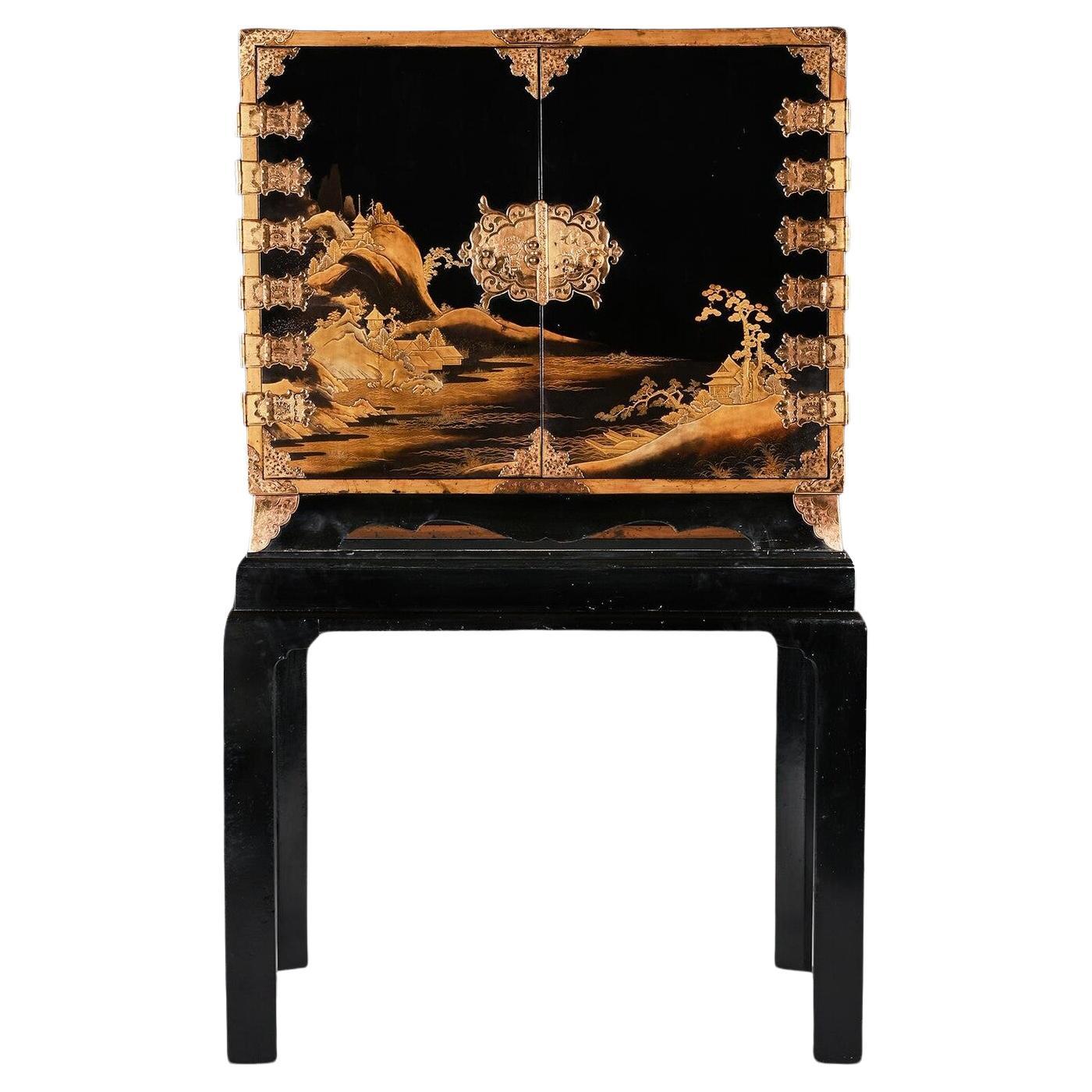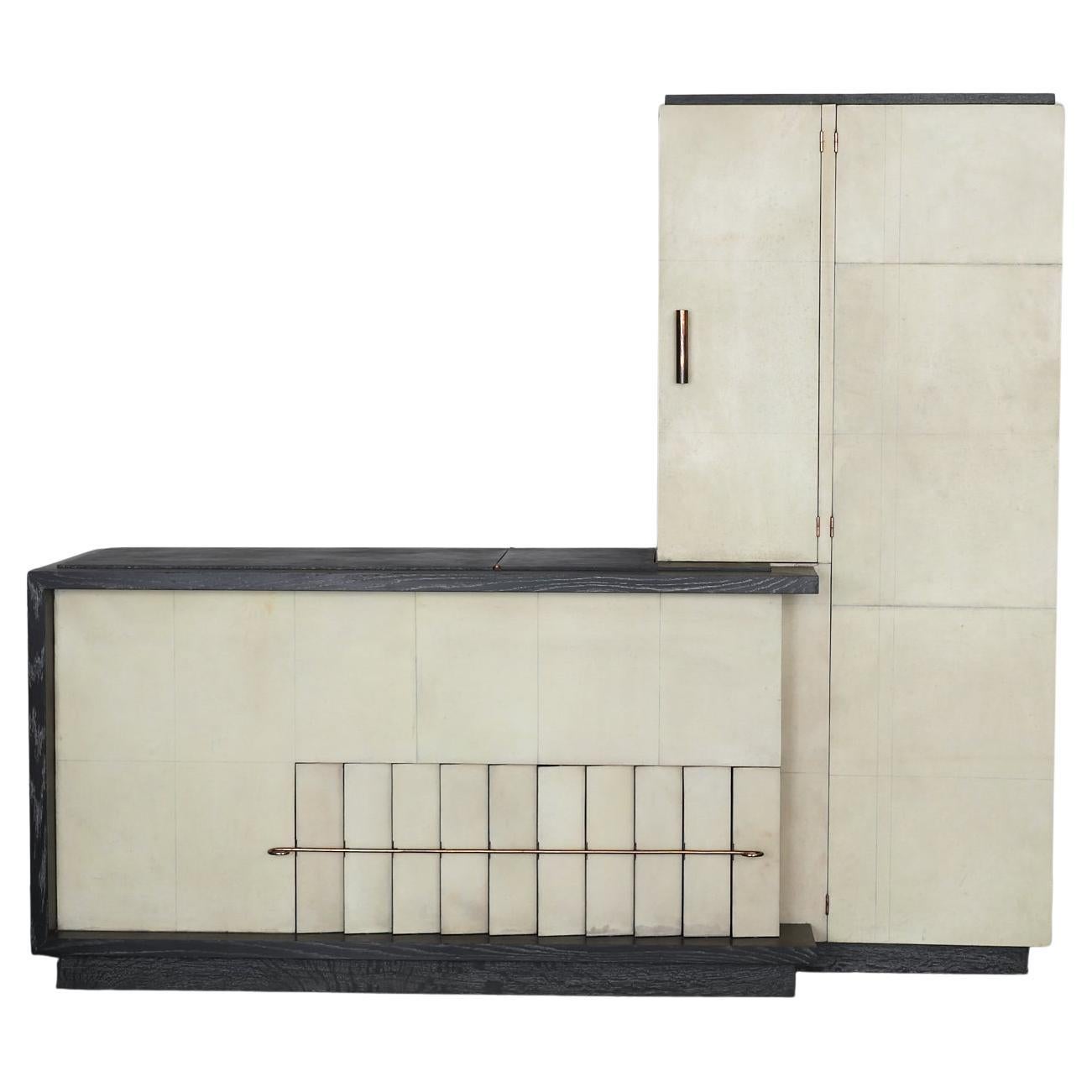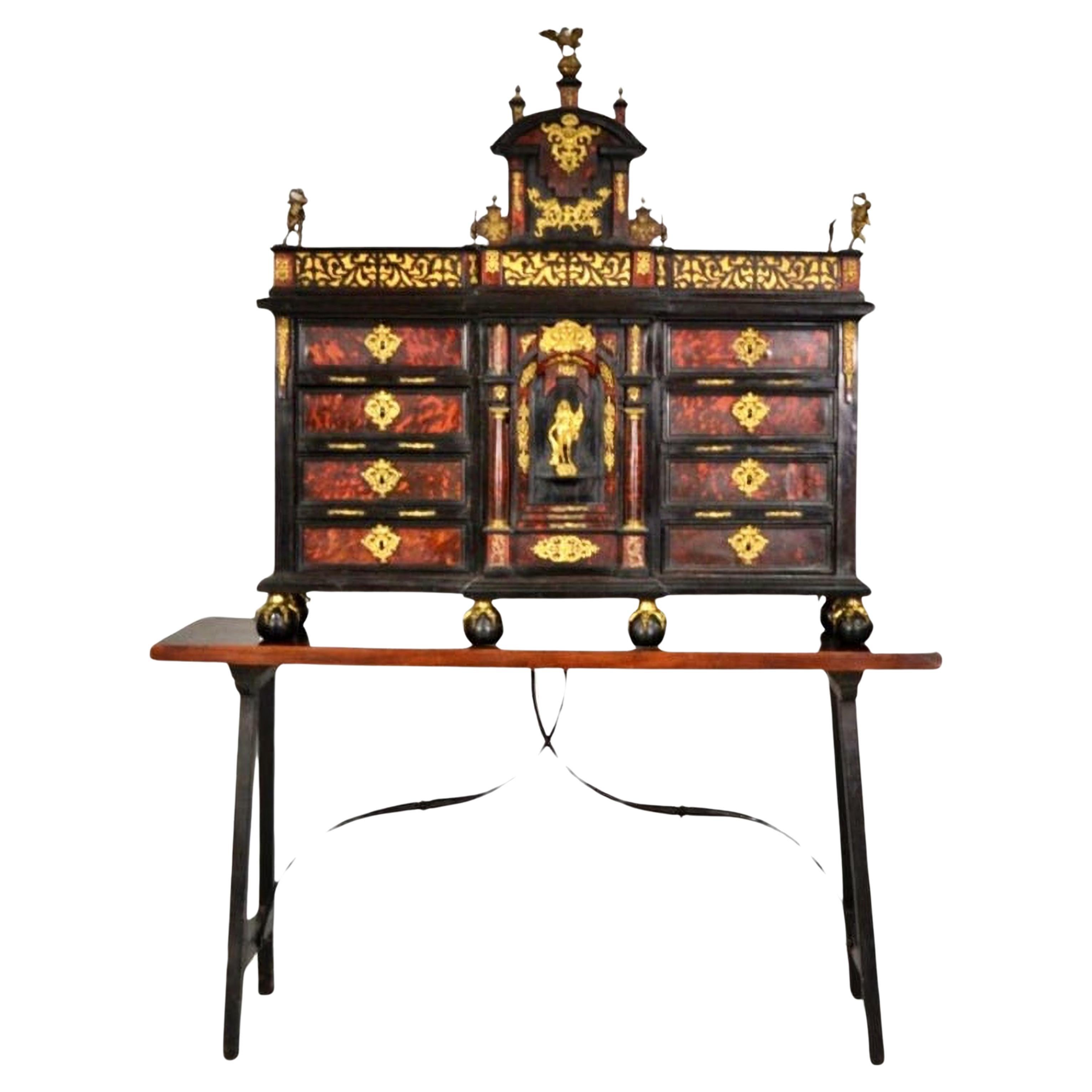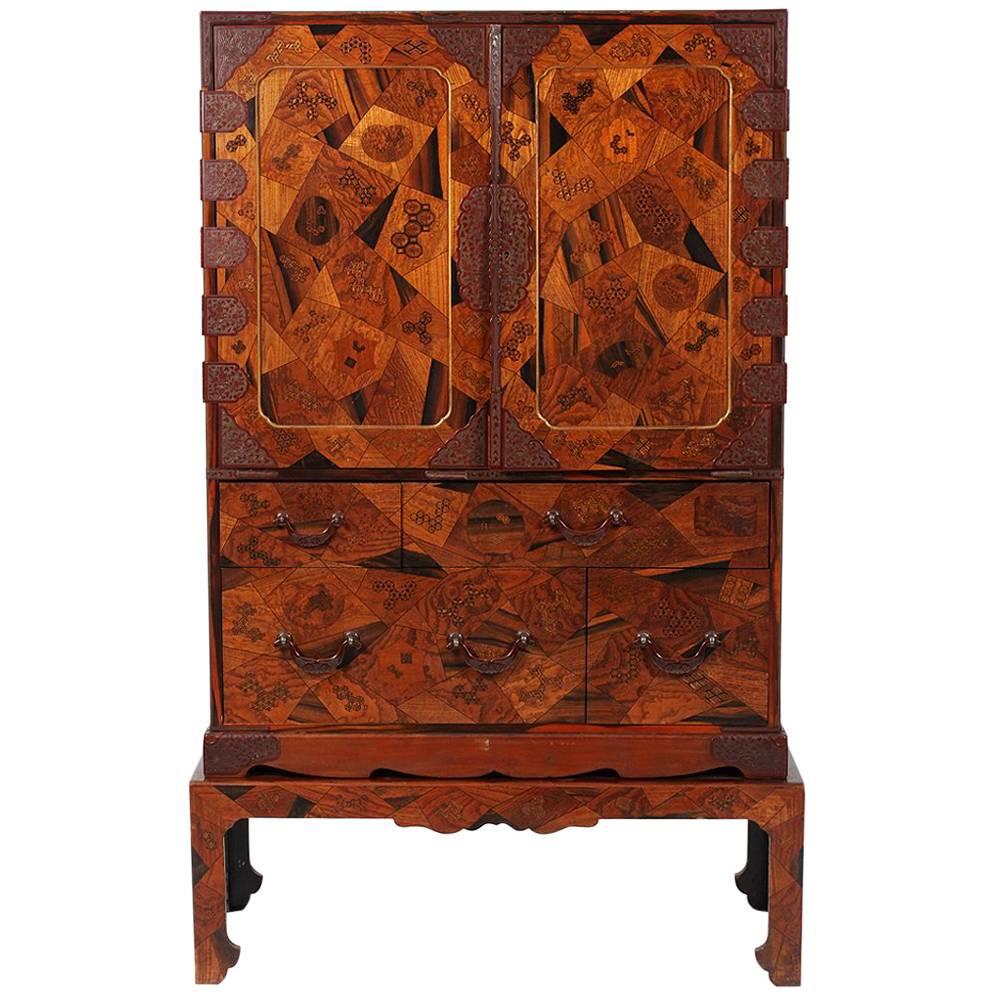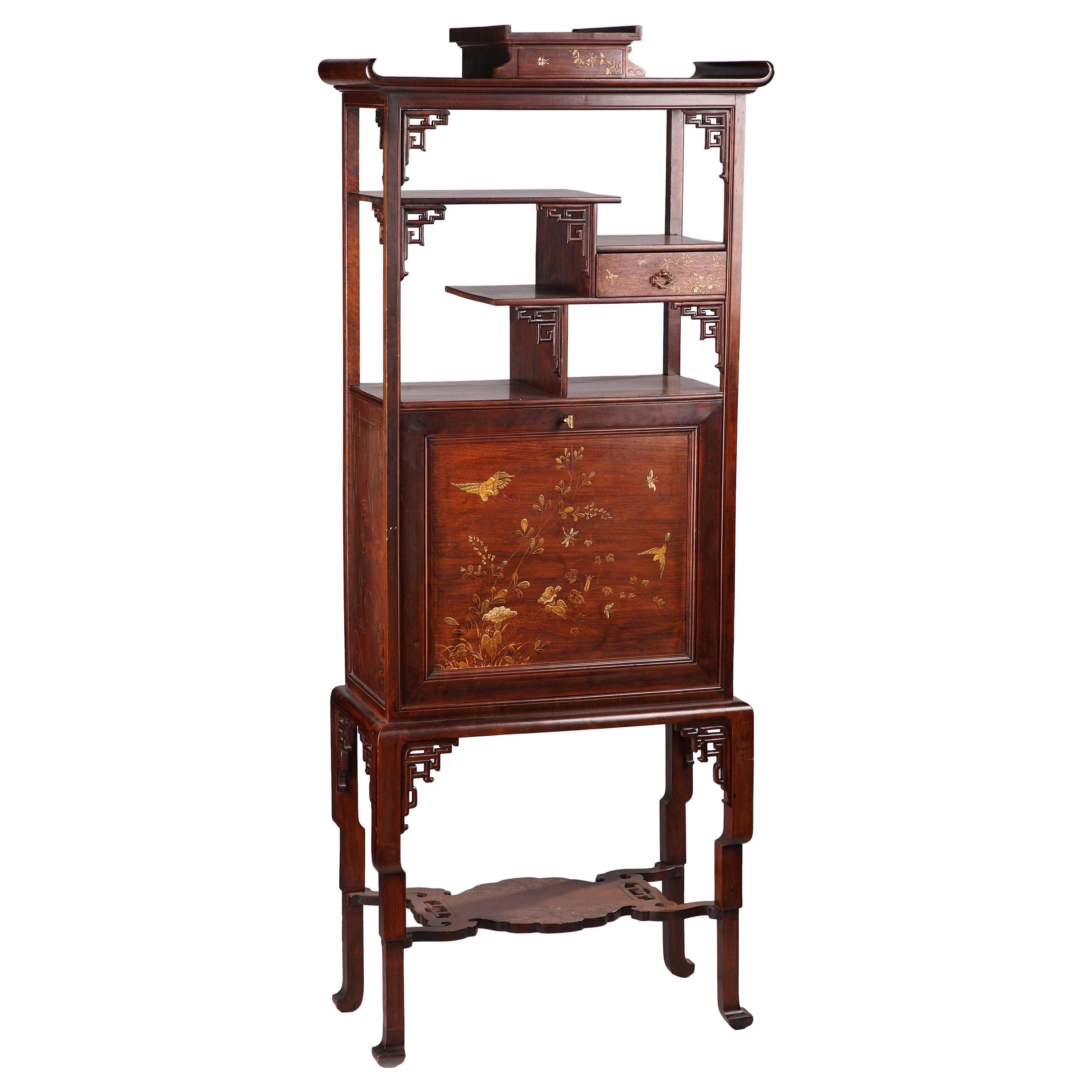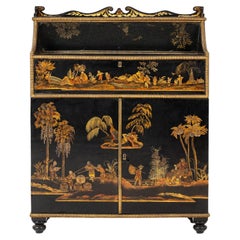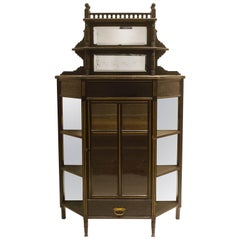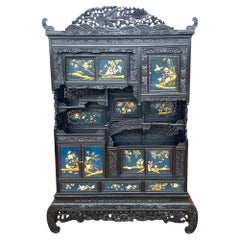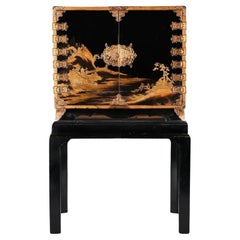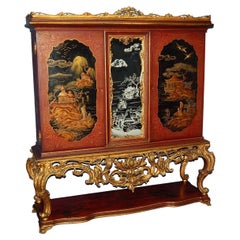
Important Japanese Cabinet
View Similar Items
1 of 12
Important Japanese Cabinet
About the Item
- Attributed to:Maison Charles-Jansen (Designer)
- Dimensions:Height: 70.9 in (180.09 cm)Width: 63.4 in (161.04 cm)Depth: 18.5 in (46.99 cm)
- Style:Japonisme (Of the Period)
- Materials and Techniques:
- Place of Origin:
- Period:
- Date of Manufacture:1950
- Condition:Wear consistent with age and use. Very good condition.
- Seller Location:CHALON-SUR-SAÔNE, FR
- Reference Number:1stDibs: LU8593234270002
Authenticity Guarantee
In the unlikely event there’s an issue with an item’s authenticity, contact us within 1 year for a full refund. DetailsMoney-Back Guarantee
If your item is not as described, is damaged in transit, or does not arrive, contact us within 7 days for a full refund. Details24-Hour Cancellation
You have a 24-hour grace period in which to reconsider your purchase, with no questions asked.Vetted Professional Sellers
Our world-class sellers must adhere to strict standards for service and quality, maintaining the integrity of our listings.Price-Match Guarantee
If you find that a seller listed the same item for a lower price elsewhere, we’ll match it.Trusted Global Delivery
Our best-in-class carrier network provides specialized shipping options worldwide, including custom delivery.You May Also Like
Important 19th Century Regency Period Japanned Side Cabinet
Located in Gloucestershire, GB
A Very Fine and Important Regency Period Japanned Papier Mache Secretaire Side Cabinet or Chiffonier.
The cabinet veneered throughout with pan...
Category
Antique 19th Century Cabinets
Materials
Lacquer
E W Godwin, William Watt, an Important Anglo-Japanese Ebonised Display Cabinet
By William Watt, Edward William Godwin
Located in London, GB
Edward William Godwin made by William Watt, with applied enamel label.
An Important Anglo-Japanese ebonised display cabinet with an upper and...
Category
Antique 1870s English Anglo-Japanese Cabinets
Materials
Walnut
Japanese Meiji Period Shodana (Display Cabinet)
Located in King's Lynn, GB
A Large Softwood Ebonised Japanese Meiji Period (1868-1912) Shodana (Display Cabinet) of exhibition quality. Whether to display your items or as bookcase this piece will definitely s...
Category
Antique 19th Century French Japonisme Cabinets
Materials
Ivory, Softwood
An Important Late 17th Century Japanese Lacquered Cabinet Edo Period on Stand
Located in Benington, Herts
An extremely fine, elegant and rare late 17th Century Japanese lacquer cabinet, from the Eco period, on later lacquered black stand.
Japanese circa 1690
Provenance
A private Scottish collection
This outstanding cabinet is a fascinating fusion of east and west. The cabinet itself would have been made in Japan, c.1690, and is decorated to the outside with hiramaki-e lacquer. This technique involves the use of sprinkled gold powder which adheres to the lacquer surface. On the best pieces, as with this example, many layers are added in order to create areas of high relief and give depth to the surface decoration. The taste of the Japanese workshops in this period was often for quite restrained pieces with plenty of the black background visible, unlike some of the busier Chinese lacquer or European japanned examples produced around the same time. The Japanese makers seemed content to rely on the outstanding quality of the lacquer itself, regarded by most experts as the finest lacquer ever produced, and did not see the need to cover every surface believing that less was more in this respect. The lacquer here is used to produce a mountainous scene with buildings on the bank of a river, the other side of the river with more buildings and a contrasting flatter and forested landscape. The fine perspective achieved is the result of the clever use of raised and flatter areas in the lacquer itself in combination with the drawing of the design itself.
Another remarkable aspect of this piece is the fine metalware throughout, but particularly the lockplate / hasp, hinges and foot mounts to the front. This is all beautifully cast and engraved contrasting against the black background. Interestingly another cabinet on stand with near identical metalwork was advertised in the Burlington Magazine, November 1913, with the dealer W. Williamson and Sons of Guildford. The lacquer on that piece is similarly refined and it seems likely that both pieces came from the same workshop.
The European influence in our piece can be seen in both the later ebonised stand and in the japanned decoration which has been applied to the inside of the doors and is also very fine indeed. This consists of two panels with birds of prey perched on branches in colours set against a golden background. The cabinet has a recent Scottish provenance and so it is likely that the ebonised stand was made in Britain though such pieces were made throughout Europe as a way of quite literally elevating these imported pieces of eastern lacquer as in Japan these would have been used on the floor. Inside the cabinet there is a combination of more Japanese lacquer and lock plates and European drawer handles. Most of the lacquer drawer fronts incorporate mountainous scenes and birds in combination, with a few purely one or the other of the two subjects. Again the lacquer is in excellent condition and is of exceptional quality with multiple layers of relief used in one single scene in many cases.
As mentioned above, Japanese lacquer is the most technically brilliant of the eastern lacquers and, as such, was highly prized by collectors and connoisseurs throughout Europe when this piece was made. The acquisition of such pieces would only have been possible for a small group of incredibly wealthy individuals, largely royal or high ranking courtiers or merchants connected with the East India trade...
Category
Antique 1690s Japanese Edo Cabinets
Materials
Lacquer
Important French Modernist Parchment Cabinet C. 1937
Located in London, GB
An important French Modernist cabinet in parchment & ebonised limed oak.
Designed in 1937, originally as a music cabinet, now suited to a variety of uses—bar, storage, or display.
Tw...
Category
Vintage 1930s French Cabinets
Materials
Leather, Oak
Important Spanish Cabinet, 17th Century
Located in Madrid, ES
Important Spanish Cabinet 17th century
in blackened wood and tortoiseshell veneer.
It opens with eight drawers framing a central door, surrounded by two columns.
Richly decorated w...
Category
Antique 17th Century Spanish Baroque Cabinets
Materials
Bronze
Recently Viewed
View AllMore Ways To Browse
Japanese Carved Cabinet
Maison Jansen Lacquer Cabinets
Maison Charles Mirror
Used Furniture Lake Charles
Italian China Cabinet
Tall And Narrow Cabinet
Free Standing Kitchen
French Mother Of Pearl Inlay
Indian Carved Cabinet
Primitive Wood Cabinet
Sevres Mounted Plaques
Spanish Paneled Walnut
Wallpaper Cabinet
Walnut Record Storage
Brass And Wood Jewelry Storage Cabinet
Briar Walnut
Carved Oak Italian Cabinet
Chipped Paint Cabinet
